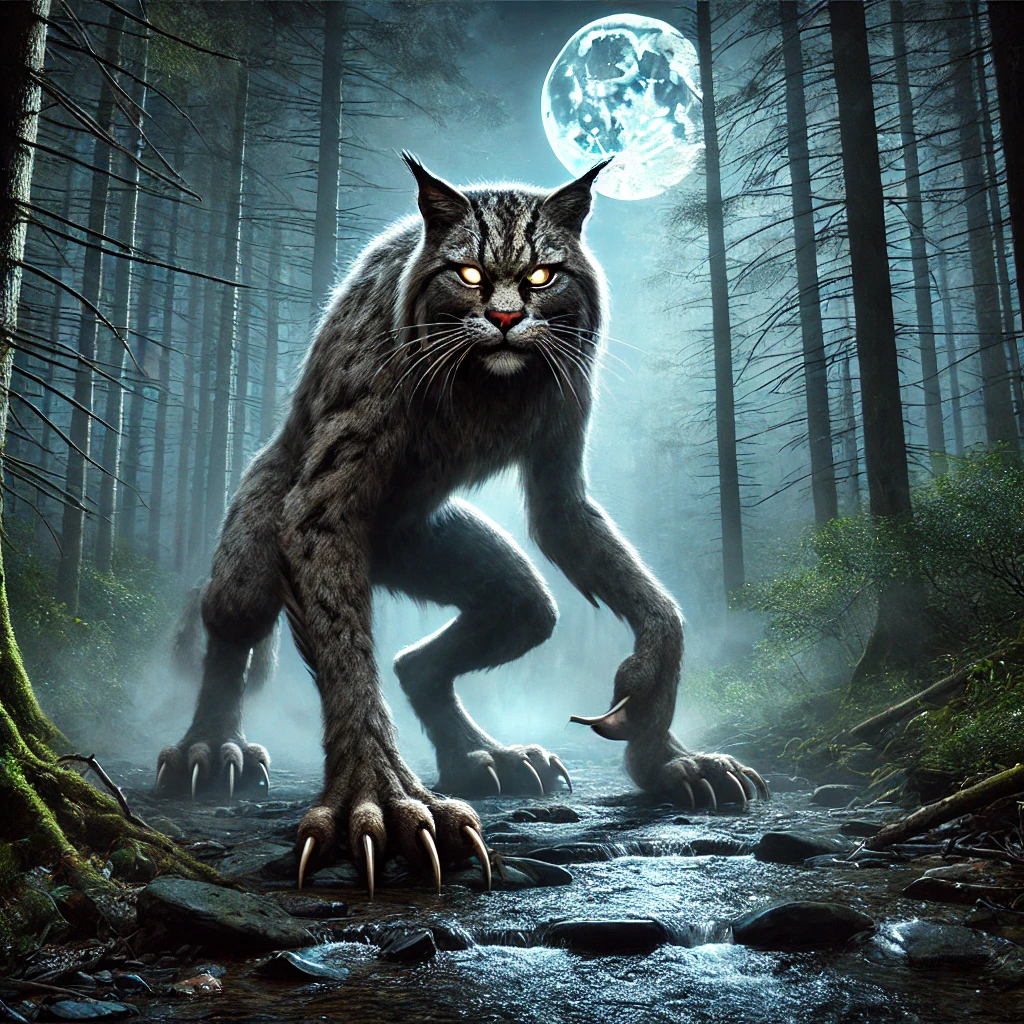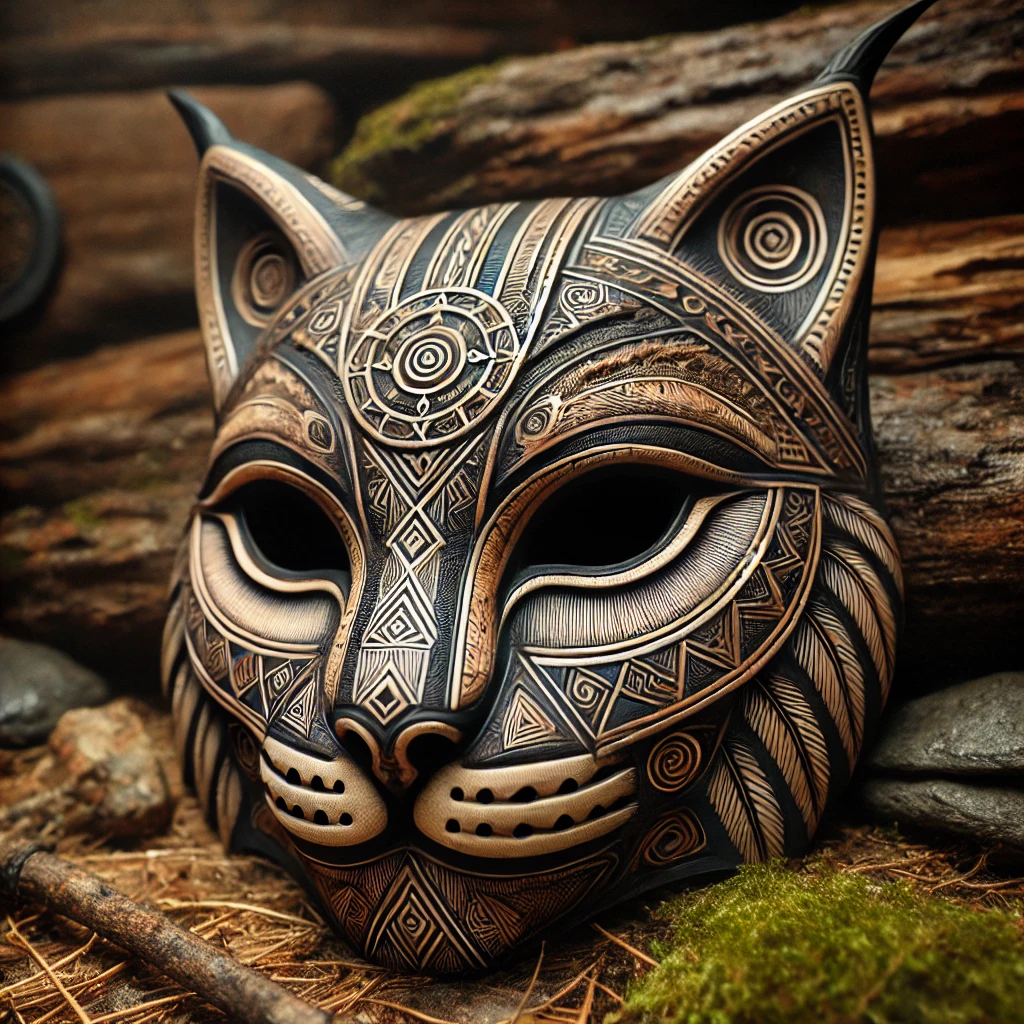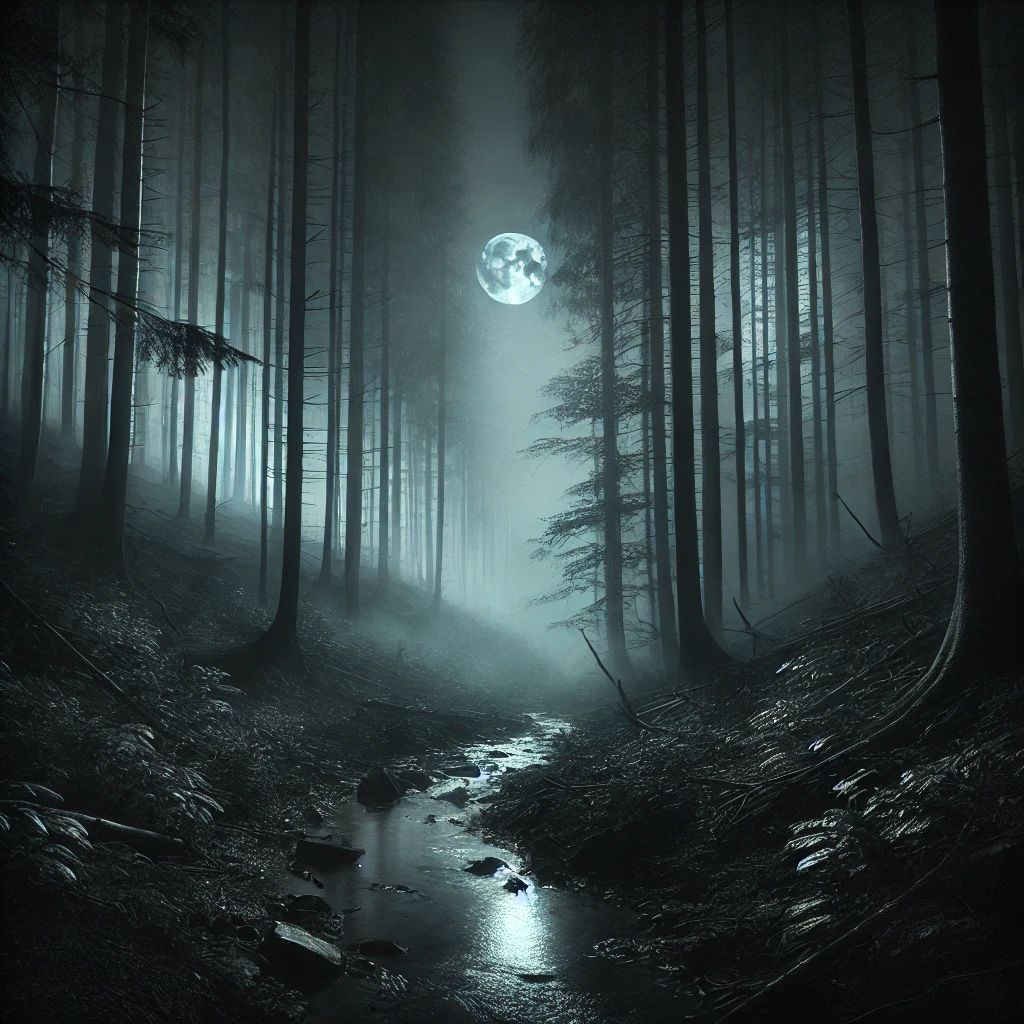The Wampus Cat: Folklore or Fearsome Feline?

It’s a cold, foggy night in the Appalachian mountains, where shadows seem to move just beyond the firelight. You hear the rustling of leaves and a distant scream. Is it a woman in distress? An owl? Or—is it something more fearsome? Old folks whisper of something else in the mountains, something deadly. They call it the Wampus Cat, a creature that’s haunted Appalachian folklore for generations.
A Curse from the Cherokee
The Cherokee were telling the story of the Wampus Cat when the first European settlers arrived. They said that long ago, the village of Etowah lived in fear of Ew’ah, the Spirit of Madness, a demon that terrorized the Cherokee people by driving men mad with just a glance. Desperate to protect their children, the village shamans and war chiefs convened to find a solution. The shamans warned that fighting the Ew’ah could doom the tribe, but the war chiefs insisted on action. They agreed to send their strongest warrior, Standing Bear, to face the creature alone, believing he could bring honor to his people by defeating the beast. As he left, his wife, Running Deer, bid him a sorrowful farewell, not knowing if it would be the last time she saw her husband.
Weeks passed without a word, until one fateful night, Standing Bear stumbled back into camp, screaming and clawing at his eyes, forever changed by his encounter with the Ew’ah. Running Deer, heartbroken and filled with fury, vowed to take revenge. Armed with a mask of a bobcat’s face, she set out to track the demon herself. After days of searching, she finally found the Ew’ah by a stream, and using the mountain cat’s magic, she turned the demon’s power back upon itself. The Ew’ah was defeated, but Running Deer’s spirit remained tied to her mission. Legend has it that her spirit now inhabits the Wampus Cat, guarding the lands of the Cherokee and protecting her people.

While rooted in Cherokee mythology, this tale has taken on a life of its own in the surrounding Appalachian communities. Families used the Wampus Cat for generations to keep their children from wandering too far into the woods after dark. “You’d better get in before the Wampus Cat gets you,” parents would call out as dusk fell. The Wampus Cat has become a warning to those who venture too far into the unknown. The legend acted as a psychological boundary to protect people from the dangers lurking in the mountains.
More Than Just a Story
The Wampus Cat isn’t just a tale to keep kids in line. Over time, it’s become a part of Appalachian culture, woven into the fabric of the region’s folklore. Some say it’s nothing more than a story passed down through generations, while others are unsure. Some claim to have seen it, or at least something like it. A flash of glowing eyes in the dark, the sound of rustling leaves when there’s no wind, and a feeling—deep in your gut—that you’re not alone.
In some parts of Appalachia, the Wampus Cat has taken on a life of its own, becoming part of local mascots and town lore. Whether used as a playful scare or a more serious warning, the legend has staying power.

Science or Myth?
Not everyone believes in the Wampus Cat, of course. Many argue it’s nothing more than a misidentified cougar or a bobcat, animals native to the Appalachian region and known for their eerie, high-pitched screams. Cryptozoologists, who study creatures like Bigfoot and the Loch Ness Monster, suggest the Wampus Cat could be a yet-undiscovered species. Others believe it’s a figment of human imagination, born out of the fear of the dark and the unknown.
But even science can’t fully explain the sightings and stories. The Wampus Cat has a way of staying lodged in people’s thoughts. This mysterious presence refuses to fade entirely from memory—a reminder that not everything is easily explained.
Does the Wampus Cat Still Roam the Mountains?
As you sit by the fire, the night closing in around you, it’s easy to wonder: Is there a Wampus Cat out there? Could it be prowling the woods just beyond the tree line, watching, waiting for the right moment to reveal itself? Or is it simply a story passed down through generations, meant to keep us connected to the mysteries of the wilderness?
In the end, whether you believe in the Wampus Cat or not, the legend serves as a reminder of the wildness that still exists in the world, especially in the remote corners of Appalachia. And when the wind howls and leaves rustle on a dark night, it’s hard not to feel a shiver of doubt. What if the Wampus Cat is real?


Comments are closed.